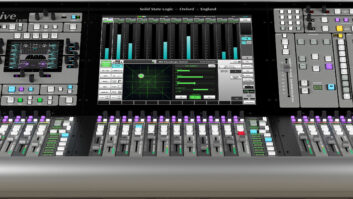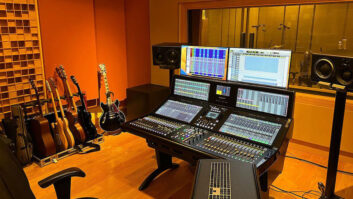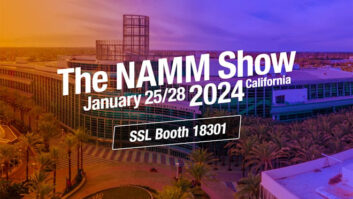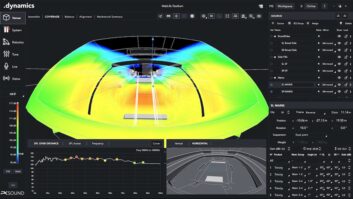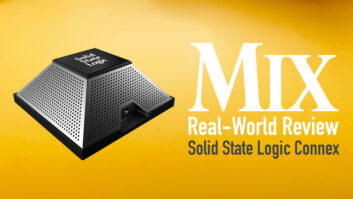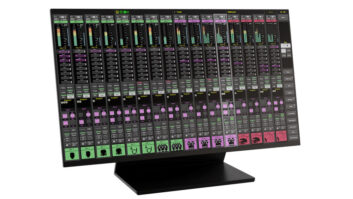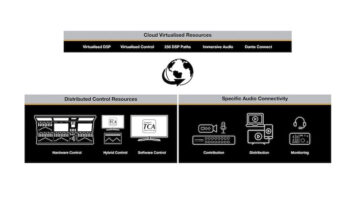Yes, these are challenging times—and times that are difficult to quantify. Before broadband, it was easy to gauge software sales: You counted the boxes on Guitar Center’s shelves at the beginning of the month, counted again at the end of the month, and drew your conclusions.

No more. For starters, Apple no longer sells through retailers, so statisticians stuck in the 20th century would think Logic X Pro has 0 percent market share and 0 percent dollar share. We all know that’s not true. Also, companies are increasingly selling software via direct downloads, which is essentially untrackable by market researchers. As most software companies are privately held and small, they don’t release sales figures. Then there are the companies that do rentals, subscriptions or memberships (which are not all the same thing). If someone rents software for a year and at the end of the year, they don’t renew and their software dies, have they made a purchase?
Interfaces are part of the picture, too. They still move mainly through retailers, so it’s much easier to track sales; and according to industry sources like MI SalesTrak, interfaces account for about three times the dollar sales of software. However, that seems counter-intuitive—you’d think people would have more software than interfaces. As to what accounts for the difference, either downloads have become by far the dominant way to buy software, or people run a lot of stolen software on the interfaces they have to buy.
Software theft is still an issue, but my sense is it’s less so these days, because legitimate users enjoy privileges from purchasing software—free updates, tech support (paid or unpaid, they still need to be registered), and not having to worry about what else is being downloaded along with the crack itself. But like most locks, copy protection is best at keeping honest people honest. I know two companies that saw no sales increase when they implemented heavy duty copy protection, and no sales decrease when they removed it. Their conclusion was that the people who stole software probably wouldn’t have bought it anyway; they just like to steal things and not get caught (“Hey, I’m a pirate! Arrrr!”).
Regardless, out of all this uncertainty, some trends are hard to dispute. Companies with hardware/ software combinations (Avid, PreSonus, MOTU, Ableton, Steinberg, etc.) tend to be healthier than software- or hardware-only companies. One major exception is Focusrite, which continues to become an ever-stronger player in the interface market; Apogee also does well, but has more of a slow-and-steady presence.
There are also variations on the hardware/software theme. Universal Audio doesn’t do DAWs, but its high-end interfaces paired with high-quality plug-ins have served the company well. Similarly, Native Instruments—although relatively late to the hardware game—has put together a DAW-less but winning combination of virtual instruments, plug-ins, and both instrument and DJ controllers (with some audio interfaces as well). Equally interesting, NI went through a year where it basically concentrated on software stability and operating system compatibility—an investment that seems to have paid off.
Avid remains top dog in our industry, but continued dominance is not a given. Ableton has become an extremely strong player, through what I see as it creating a market and by definition, owning 100 percent market share. Fortunately for Ableton, it was a market that wanted to exist. Granted, companies like Bitwig are shooting for that market, but it’s always difficult to unseat an incumbent. Image-Line, with FL Studio, has taken a sideways approach to that market and done well for itself, but Ableton is to the loops ‘n’ grooves crowd as Avid is to the virtual 2-inch 24-track fans.
In terms of the platform itself, the Mac still has a disproportionate market share among musicians compared to the general public. MacBook Pros are the main axe for DJs and live performance; however, they’re starting to get some competition from powerful hardware like the Surface Pro 3 and Microsoft’s increased attention to audio—the iPad Pro is just not the same kind of tool (especially given that it’s iOS), while Windows 10 crosses the tablet, desktop and smartphone world. Will these differences help Windows-oriented musicians? We’ll see.
Meanwhile, with few exceptions, companies are basically maintaining the status quo—and matters will likely stay that way until—and if—a new generation puts down its smart phones long enough to want to learn how to become musicians—whether with traditional instruments, controllers or as DJs.
